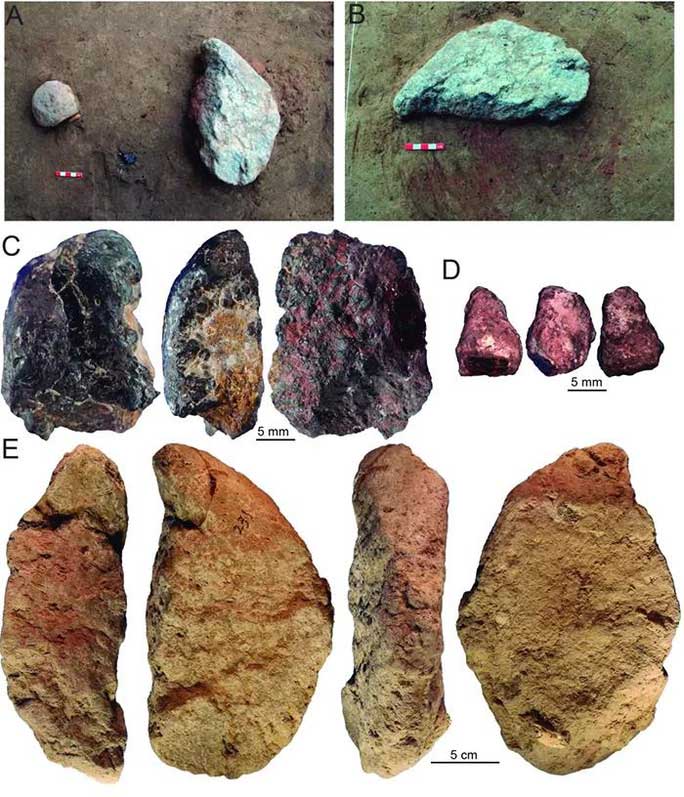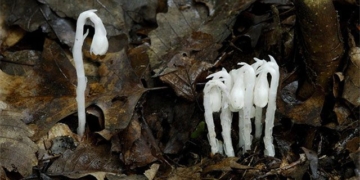A tool cache and sculptures recently excavated in the mountainous region of northern China reveal an unknown civilization where ancient hominins specialized in mining ochre and crafting stone blades.
According to Science Alert, the Xiamabei archaeological site provides a rare glimpse into the lives of ancient Homo sapiens and their extinct relatives, who may have coexisted in the area around 40,000 years ago.

Recently excavated tools – (Photo: Fa-Gang Wang, Francesco d’Errico).
The newly discovered site is located within the Nihewan Basin, a depression in the northern mountainous region of China. The remnants of the ancient civilization lie within dark sediment 2.5 meters below the surface, comprising a treasure trove of over 430 mammal skeletons, fire pits, physical evidence of ochre use and processing, more than 38 sculptures, and various stone tools and artifacts.
The two lead authors – Dr. Shixia Yang from the Chinese Academy of Sciences and the Max Planck Institute for the Science of Human History, and Professor Francesco d’Errico, Director of Research at CNRS, University of Bordeaux – stated that their findings represent the oldest ochre production workshop ever excavated in East Asia.
The methods used to dye tools with ochre, as well as the creation of various shades of ochre, showcase unique characteristics of symbolism, technology, and behavior belonging to a distinct early civilization.
It remains unclear which species of humans were the primary creators of this ochre tool-making technology, as no direct human fossils have been found. Evidence suggests that both Homo sapiens, Neanderthals, and Denisovans may have been present here, potentially cohabiting, as it is known that these species often interbred.
The study was recently published in Nature.





















































